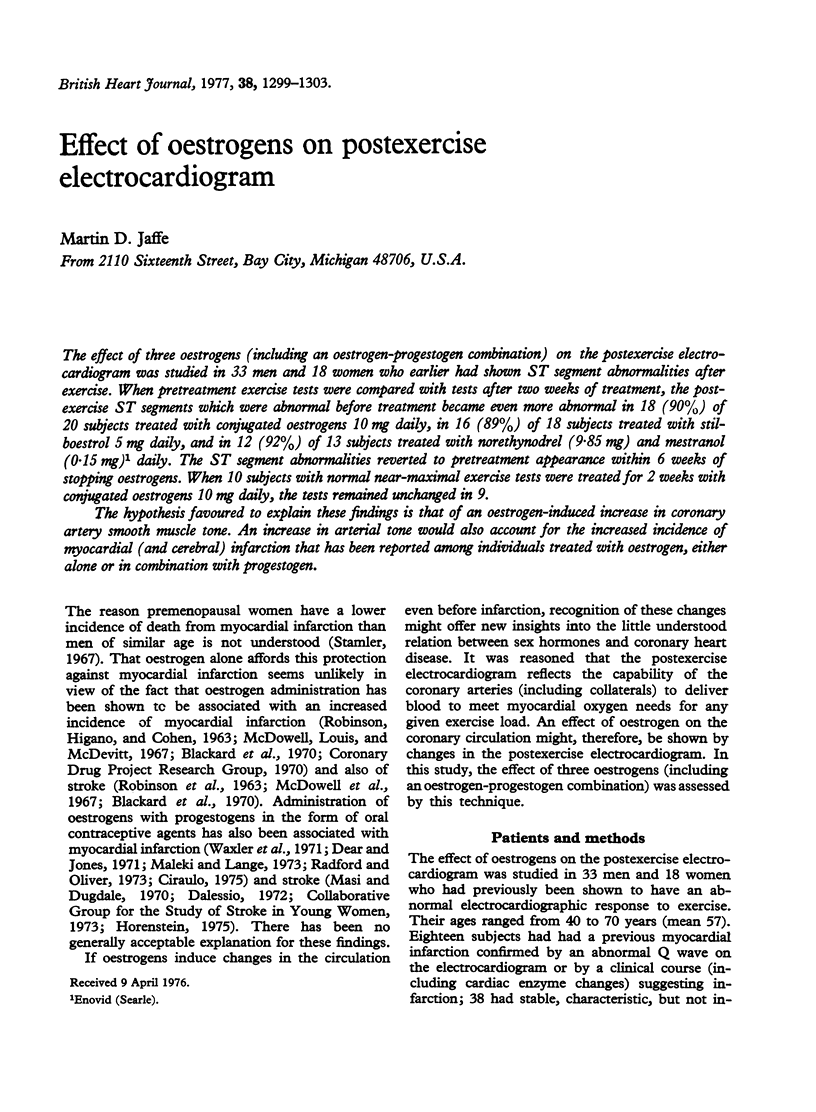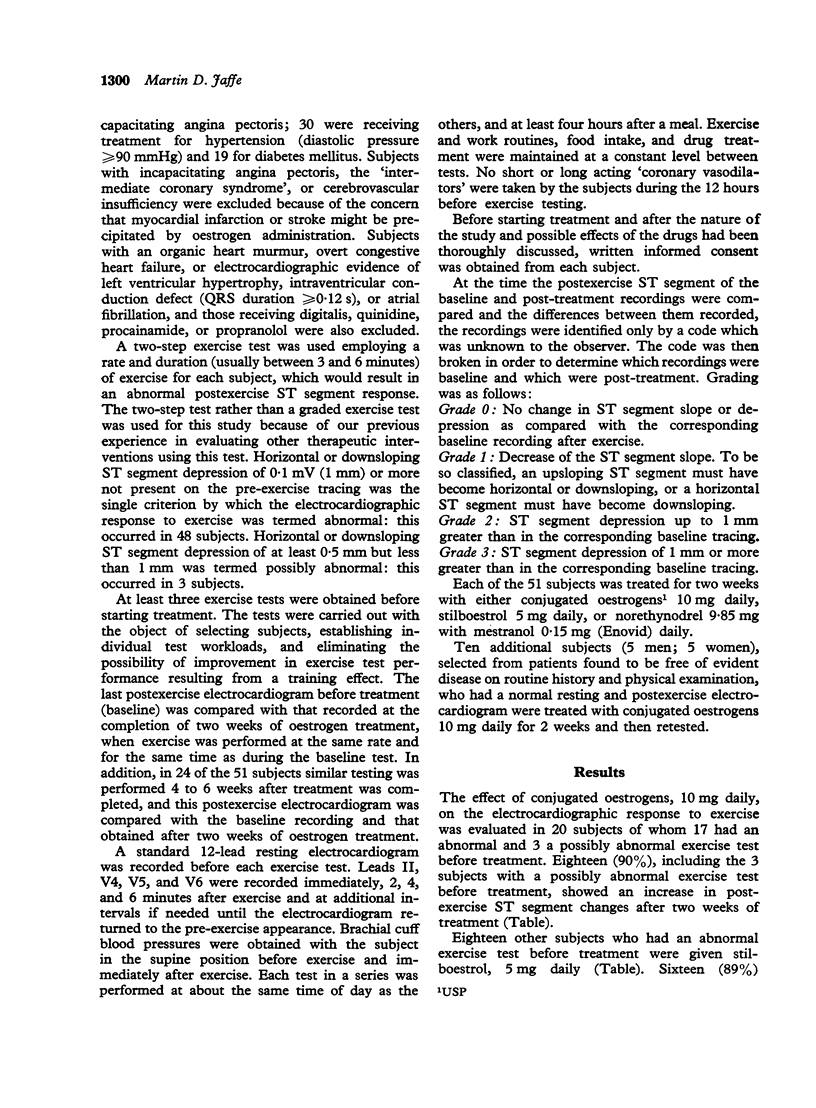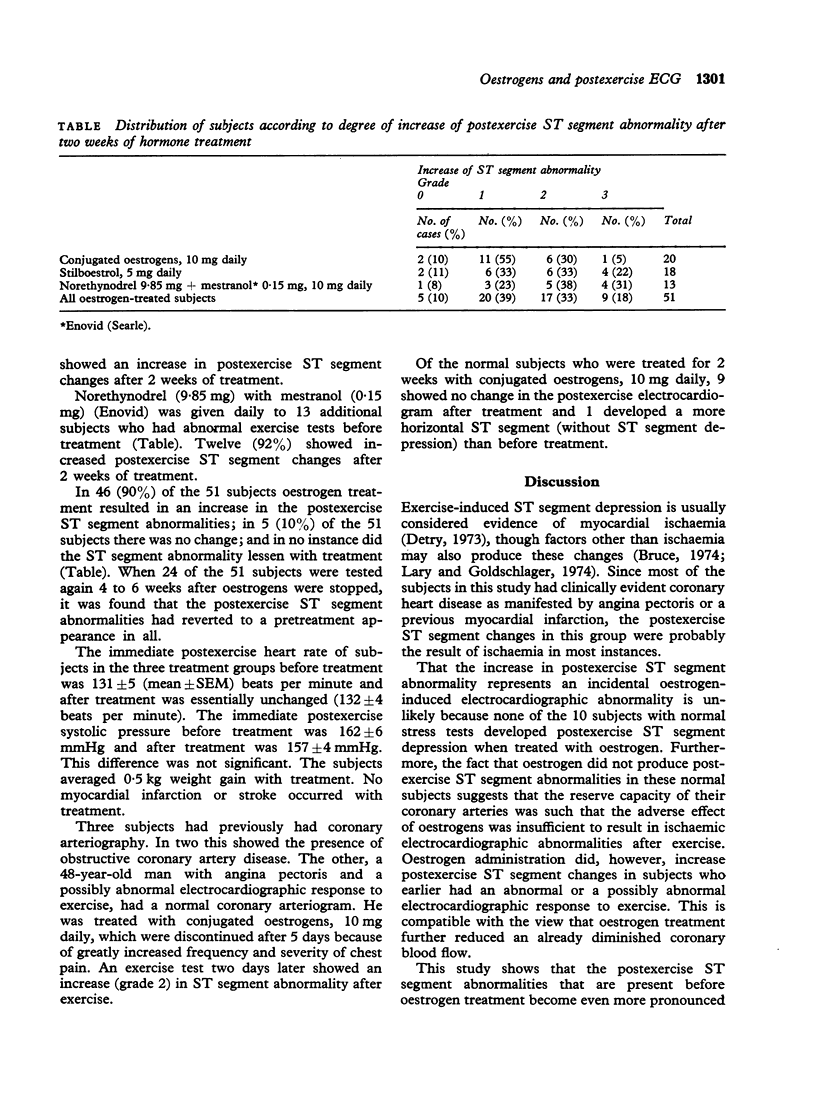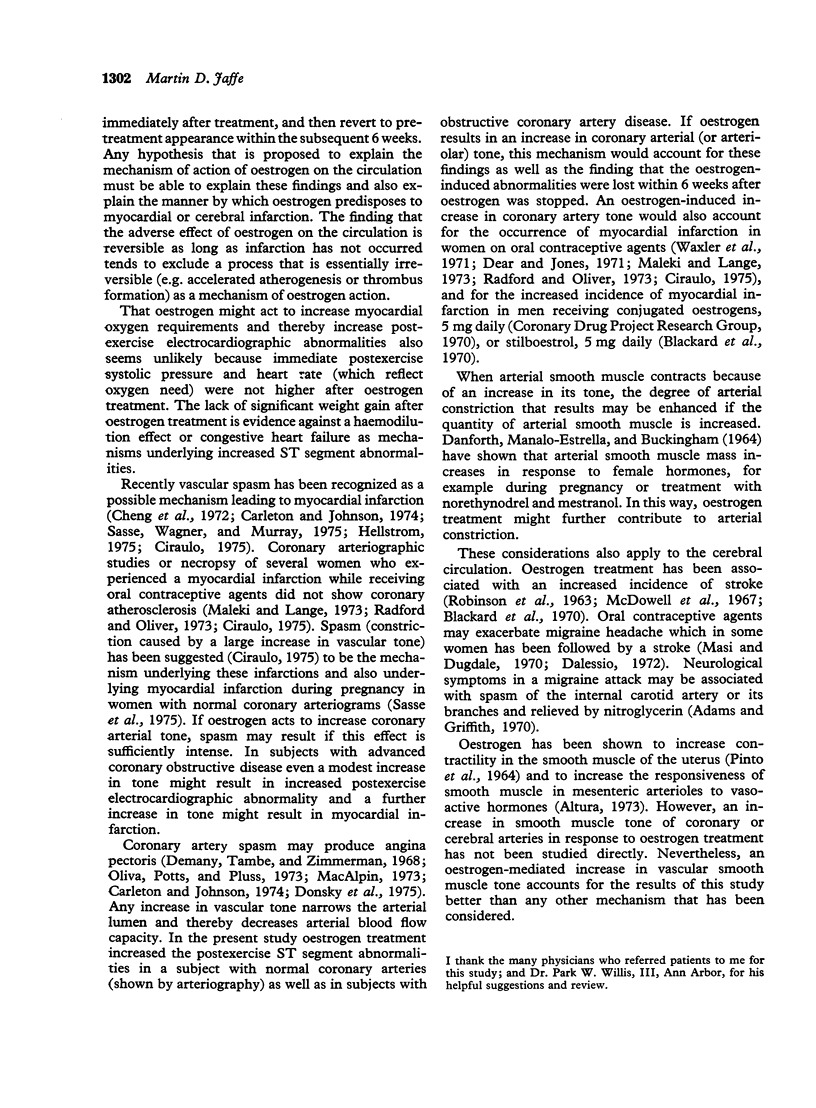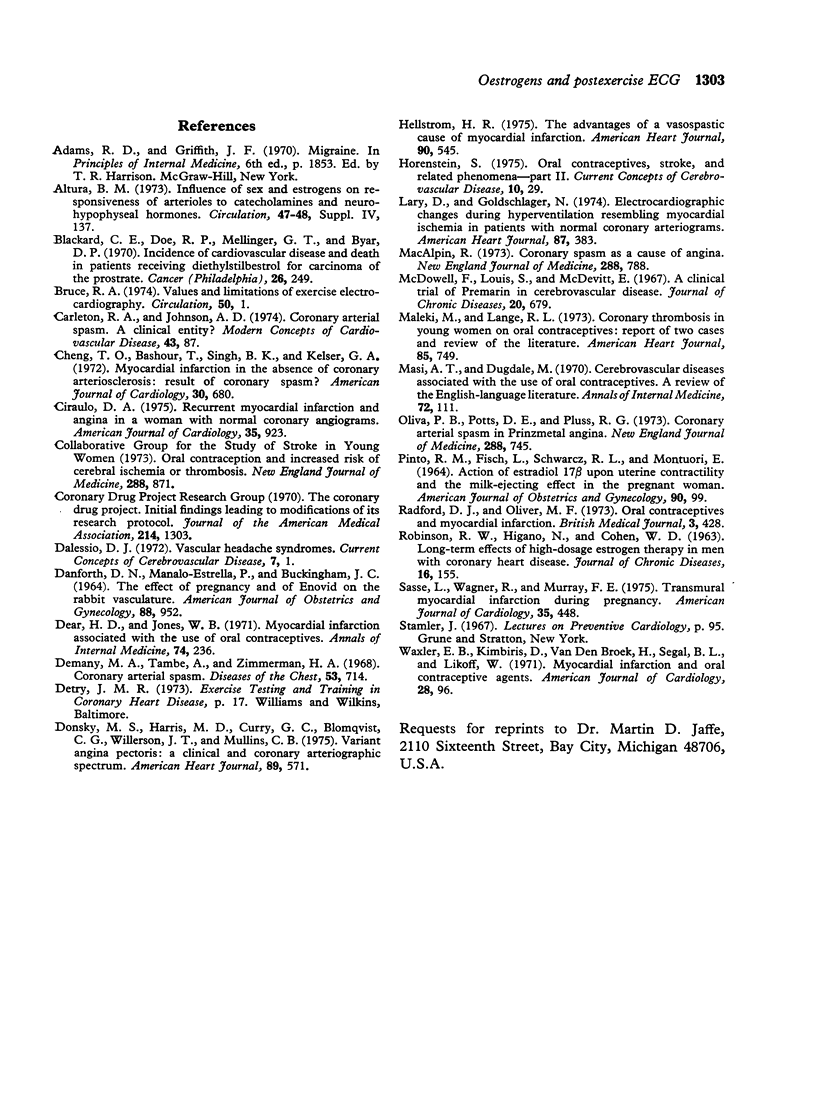Abstract
The effect of three oestrogens (including an oestrogen-progestogen combination) on the postexercise electrocardiogram was studied in 33 men and 18 women who earlier had shown ST segment abnormalities after exercise. When pretreatment exercise tests were compared with tests after two weeks of treatment, the postexercise ST segments which were abnormal before treatment became even more abnormal in 18 (90%) of 20 subjects treated with conjugated oestrogens 10 mg daily, in 16 (89%) of 18 subjects treated with stilboestrol 5 mg daily, and in 12 (92%) of 13 subjects treated with norethynodrel (9-85 mg) and mestranol (0-15 mg)1 daily. The ST segment abnormalities reverted to pretreatment appearance within 6 weeks of stopping oestrogens. When 10 subjects with normal near-maximal exercise tests were treated for 2 weeks with conjugated oestrogens 10 mg daily, the tests remained unchanged in 9. The hypothesis favoured to explain these findings is that of an oestrogen-induced increase in coronary artery smooth muscle tone. An increase in arterial tone would also account for the increased incidence of myocardial (and cerebral) infarction that has been reported among individuals treated with oestrogen, either alone or in combination with progestogen.
Full text
PDF